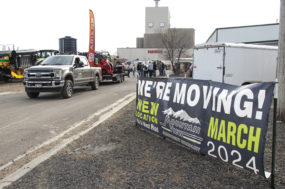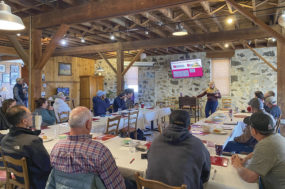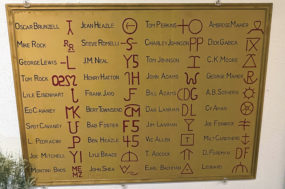Shawn Stolworthy grew up farming with his dad near Firth, Idaho. “In 1997, I went to a fertilizer convention and heard about a corn maze. It sounded like fun; I was intrigued by the idea because it was artistic and different. I’d always been enamored with crop art and wanted to do something like this – combine art with farming,” he says. “I consider myself an artist, but I paint with a John Deere tractor.”
He learned a lot about corn while obtaining an agronomy degree, but his family grew potatoes. “We didn’t have a corn planter when I did my first corn maze, and no one else in our area was growing corn, so we planted our maze with a grain drill. We learned that corn does well following a potato crop.”
They were using GPS to fertilize and mark potato rows. His brother had a GPS company and was installing GPS equipment in tractors (at the forefront of GPS technology). “When I heard about mazes, I wanted to use GPS to create them. It was a little rough when we did our first maze, and we’ve learned a lot since then, but that first one was a success on our farm,” Stolworthy says.
While cutting it, he wasn’t sure if the design would look like the tiger he was trying to create. “After I had part of it done, we decided to check it. Our spray pilot flew over and took pictures – back when we used film. We had to wait to have the photos developed! The pictures looked good, so we finished cutting the maze,” he says.
“I’d been told that it took at least a week to create and cut a maze from a field of corn. I figured I could hire out my services and cut mazes for people; I could save them a lot of time and do it in one day.”
Most mazes at that time were smaller than they are today, but the maze he created on his farm that first year was large. Initially, his father wasn’t impressed with the idea but finally let Stolworthy try a maze on one corner of the farm. The next year he did three mazes for other people. “This got me started in 1998. The next year, I decided this could be a full-time option,” he says.
Family and friends pitched in to help. “We signed up to do 21 mazes. I began cutting mazes full time,” Stolworthy says. He put up a website to market his services. “I got enough business that first year to make a career and that’s how we got our start.”
The first maze he cut for someone else was in Washington state. His wife, Heather, was willing to take a tent and sleeping bags and travel with him across Montana and Washington. Heat and weather challenges made it difficult, but Stolworthy trudged through fields with a backpack, followed by a tractor to create the trails. There were times the mosquitos were so thick he’d get in with the tractor operator. It was difficult trying to lead a tractor through tall corn. It sometimes cut his face and wrists and the tassels would slap the back of his head when the tractor got too close.
The business grew and needed more help. Chayce Whitworth joined MazePlay in 2004 after finishing college in Rexburg. “Shawn and I had a mutual friend who asked me to draw some pictures. I graduated with a bachelor’s degree in fine arts, and Shawn offered me a job at the corn maze – and I discovered what I’d been drawing pictures for!” Chayce says.
“We’ve created thousands of mazes, utilizing all kinds of subjects. We can usually draw anything anybody wants and turn it into a maze design. Each year, people can have a different theme in their cornfield,” Chayce says. Agritourism is a big thing today, and a maze is a great marketing scheme to attract people to a farm. If you create something people like to see in the design, this gains media attention, which helps promote the farm’s agritourism.
At first, the mazes were cut from fully grown cornfields, but seven years ago they built a planter so they can plant corn in the desired maze design. “Most of the mazes now are actually planted,” Stolworthy says. “We have a planter we haul around with us to create mazes, though we still cut a few. Our mazes are probably 80 percent planted and 20 percent cut from already-grown corn.”
When he started, he just used a backpack with GPS. “After we got the GPS accurate enough with new systems, we put it on the tractor. This was a huge leap ahead; we didn’t have to go mark it out and then cut it. This was much easier,” Stolworthy says.
“Sometimes the person on the tractor at the farm couldn’t follow me in tall corn, and it was a nightmare. I’d have to tell them we were done for the day and then I’d go back out in the field and strap the backpack onto the front of the tractor! We did that a few years and then had it automated with GPS on the tractor,” he says.
“There was a lot of improvement in GPS by that point, and then we were able to develop our planter. I built part of it and used some of the modern technology, and this helped us do mazes faster. This also takes care of another step for our customers: They don’t have to worry about planting,” Stolworthy says.
Not all their customers are corn farmers; they may not have a corn planter or may have to borrow one. “We use our own and it does a better job for them. It is easier to do it this way than cut it after the corn has grown, saves some money on seed – and they don’t need a planter,” he says.
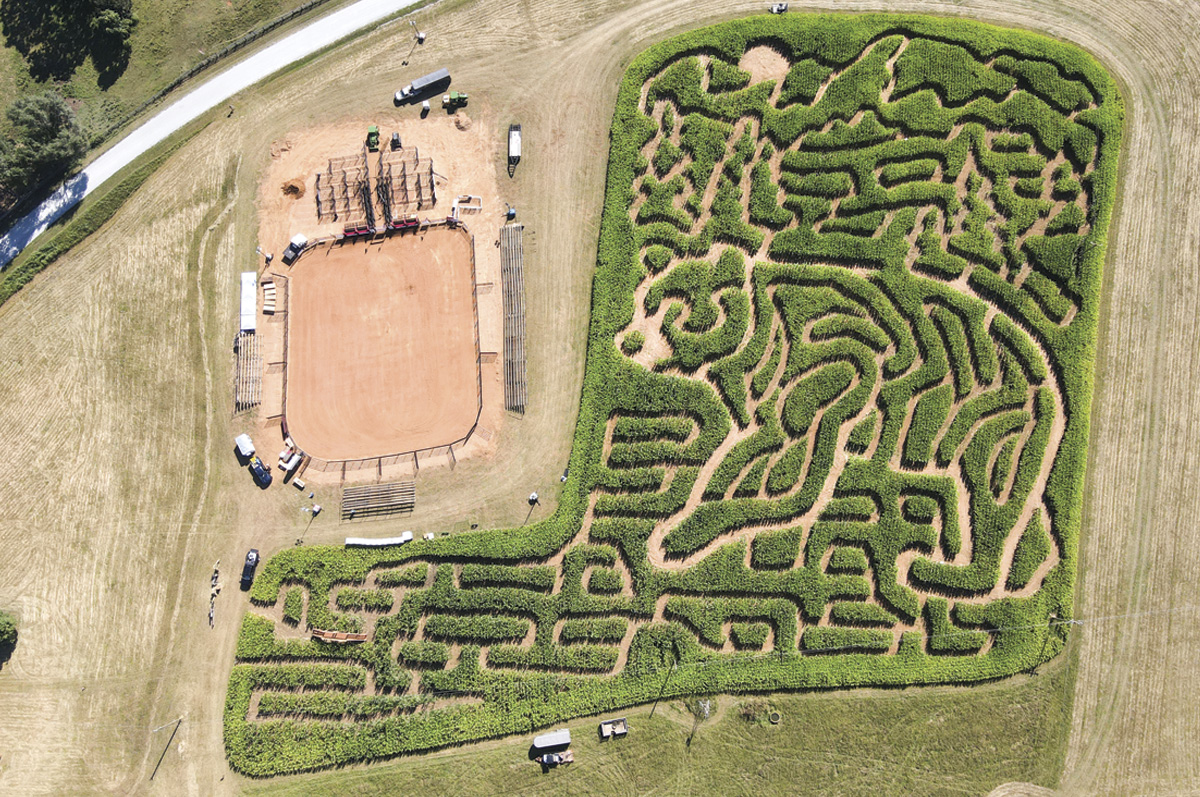
Photo courtesy of MazePlay.
It also allows MazePlay to start earlier in the spring, though some people still want mazes cut after the corn is grown. Perhaps they decide to do a maze after they’ve already planted a field. “We can do it either way, as we go through the season,” Stolworthy says.
They have created mazes in 42 states. “When I started, many people thought corn mazes were just a fad, but I decided to do them anyway, thinking that it would be a great career for a few years – but it kept going.”
At first, corn mazes were just a summer thing and then they transitioned into a fall thing along with pumpkin harvest. “It became more than a fad because it is tied to fall traditions. People can get their pumpkin and go through a corn maze on the farm and have a fun day for the family,” Stolworthy says.
“My father-in-law at first was concerned about me taking his daughter across the country trying to make maze cutting a business. We put our life savings into it and took a chance,” he says. Early on, no one would have considered this could be a way to make a living in agriculture.
“One of my older customers told me that when he was in college getting his degree, if he’d written his dissertation saying he could make money selling water and a walk through the corn, they would have failed him, but now that’s what he’s doing and grinning all the way to the bank! He lives near Denver, and it’s a major business for him, employing several hundred people in his entertainment operation – and we create mazes for him. It’s all about giving their customers a walk through the corn and selling them a bottle of water! They have many different attractions, but their corn maze is one of the big ones,” Stolworthy says.
This is also a way to help educate city people about farms. Some farmers utilize agritourism to bring people out and show them the farm and learn what farmers do and where their food comes from. MazePlay is an Idaho farm business that quickly went national and has become a great success.
“It comes with challenges, like any kind of farming. This year, for instance, I traveled eight hours to one location, got rained out, and had to come back later. When you talk about 1 dollar per mile, this becomes expensive! We replanted six mazes this year because of weather. Our planting season now, however, is April through Thanksgiving. We’ve branched out beyond corn mazes and planted tulips for tulip festivals and sunflowers for sunflower festivals. We start the tulips in late October, so we have a little break between the corn mazes and tulips – enough to get the equipment repaired,” Stolworthy says. Breakdowns happen, and they generally take their “shop” with them on the road.
MazePlay has a talented team of professionals who are passionate about what they do, creating technical and fun mazes. They designed the Farm Scene Investigation corn maze game and illustrated storybook, and also provided marketing materials and assistance for customers. For many of their larger customers who host different events, MazePlay creates some cartoon maps.
Stolworthy wanted to help people with more than just maze cutting and wanted their businesses to succeed, so he created a maze manual. “I wish I’d had something like this to help me when I started. It could have saved me a lot of time and money!”
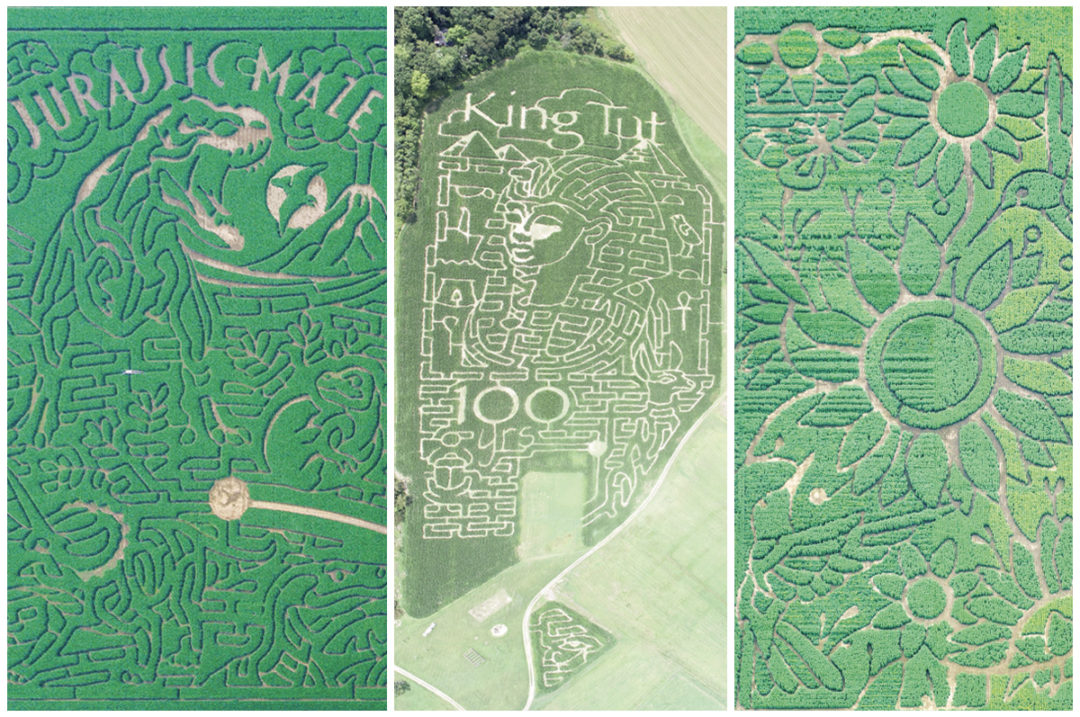


.jpg?t=1687979285&width=640)

